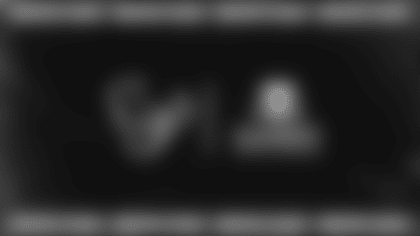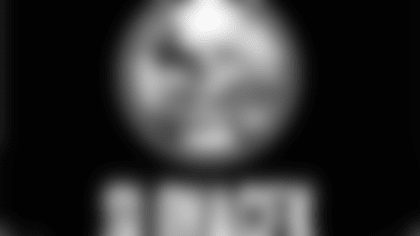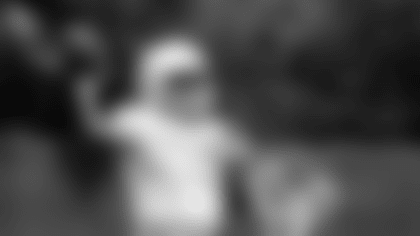After an extended hiatus in which he was deeply immersed in thought (and free weights), Texans strength and conditioning coach Dan Riley has made his triumphant return to the popular Fitness Corner column.
Riley and assistant strength and conditioning coach Ray Wright will continue to post selected answers to your questions throughout the year. Join in by shooting over an e-mail to fitness@houstontexans.com.
Here is an archive of past columns. Dan and Ray have also made the club's strength and conditioning manual available. Click here to download it.
This week's installment of the Fitness Corner features Texans Linebacker Kailee Wong and our Push-Pull Routine. Kailee is the consummate professional and one of our most disciplined workers. He chose our Push-Pull routine for his after practice Friday workout last week. Riding shotgun with Kailee is former Duke graduate and current Strength Coach Ray Wright.
Our players have a variety of routines to choose from. All of our upper body routines incorporate a series of multi-joint and single joint exercises. All of them except for our No Hands Routine and our Push-Pull Routine. Our No Hands Routine is composed entirely of isolation exercises while our Push-Pull Routine includes only multi-joint exercises.
To develop total body maximum strength we believe it is necessary to perform both single joint and multi-joint exercises. In our Texans strength program we classify exercises into two different categories. These categories include multi-joint exercises and single joint (isolation exercises).
A multi-joint exercise involves more than one joint. One of the major advantages of a multi-joint movement is that several muscle groups are brought into play. Strength is developed collectively by a group of muscles. Another advantage is that most people have access to equipment needed to perform a wide range of multi-joint movements.
An example of a lower body multi-joint exercise is the squat or leg press. The hip, knee, and ankle joint are involved. Each of the muscles crossing these joints is directly or indirectly involved in the execution of the exercise.
The major disadvantage of a multi-joint movement is that some muscles perform more work than others. The muscles performing the most work receive the greatest benefit, while others receive less. Every muscle must be developed to its maximum if injury prevention is our goal. To accomplish this, both isolation exercises and multi-joint exercises must be performed.
We categorize our upper body multi-joint exercises as a pushingmovement or a pulling movement. Technically…all muscles pull. The insertion is the point where a muscle attaches to a bone that is capable of moving. When a muscle contracts it pulls on the spot where the muscle inserts on the bone causing movement. From a muscles standpoint of view, all exercises are pulling movements.
Our upper body pushing movements primarily incorporate the chest, shoulders, and triceps. An example of a pushing movement is the incline press.
Our upper body pulling movements primarily target the upper back and the biceps. An example of a pulling movement is a seated row.
Our Push-Pull Routine incorporates six different pushing angles. Rather than use only a dumbbell or a barbell, to perform each pushing movement, we implement an assortment of different equipment. Why? Variety, variety, variety.
We alternate pushing and pulling movements. Six pushing movements and five different pulling movements. We use 90 seconds rest between each exercise.
One set of ten strict reps is performed. For maximum gains use as much weight as you can safely and properly use and barely complete the tenth rep.
Before beginning the Push-Pull Routine Kailee completed exercises for his neck. We ask our players to complete all neck exercises before beginning their upper body or lower body exercises.
Listed below is the sequence of exercises we use in our Push-Pull Routine.
Smith Machine Level 2 (1; 2). Our 0 to 90 degree adjustable benches have five different adjustments. We call Level 2 an angle between a flat back bench press and an incline press.
Hammer MTS Isolateral Incline Press (1; 2). This angle and movement is comparable to performing a dumbbell incline press.
Negative Only Dips - Allow 8 seconds to lower the weight (1; 2) and use the legs to recover to the starting position.
Dumbbell Press Level 4. Level 4 on our 0 to 90 bench is an angle between the incline press and a seated press (1; 2).
Lat pulldown with an overhand grip.
The forearms are already pretty tired after five pulling movements therefore we finish this workout with a set of biceps curls with a “Fat Bar”.
We begin the Push-Pull Routine with a flat back pushing movement (bench press) and gradually increase the angle until we finish the routine with a vertical pushing movement (seated press). There are a variety of ways you can mix and match a Push-Pull Routine. Personal preference and the equipment available are the only limitations.
Our Push-Pull Routine (like all of our routines) offers variety. It is the only routine our players perform that excludes any upper body isolation exercises. We wouldn't recommend a steady diet of the Push-Pull Routine. It has some advantages and it has some limitations.
Remember, building strength isn't a rocket science. It's actually a pretty simple process. Strength training is hard work if it's done properly. It can also become tedious.
To eliminate monotony and promote a near maximum effort every workout, we encourage you to create some variety in your workouts. Incorporating variety can be the necessary catalyst to generating better gains and stimulating long-term interest in muscular fitness.
Bottom line? Lifting weights isn't much fun. The results are rewarding but the work is hard. Do yourself a favor. Put together a Push-Pull Routine and use it for a welcome change of pace.
Go
Texans!













